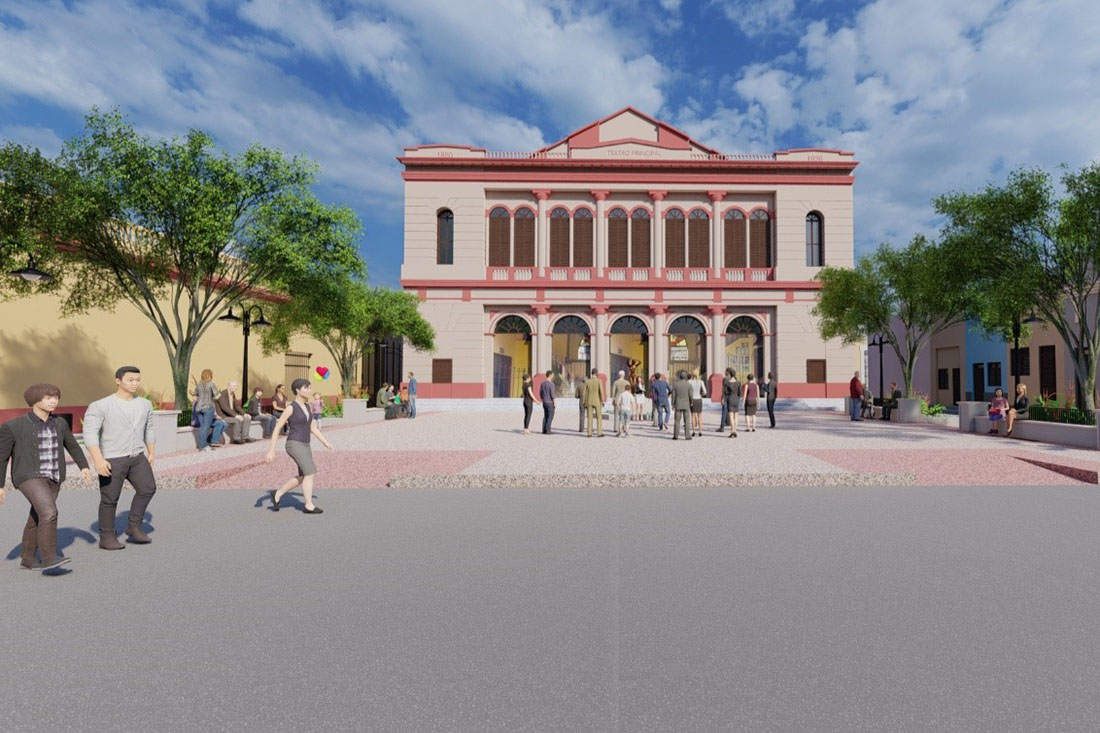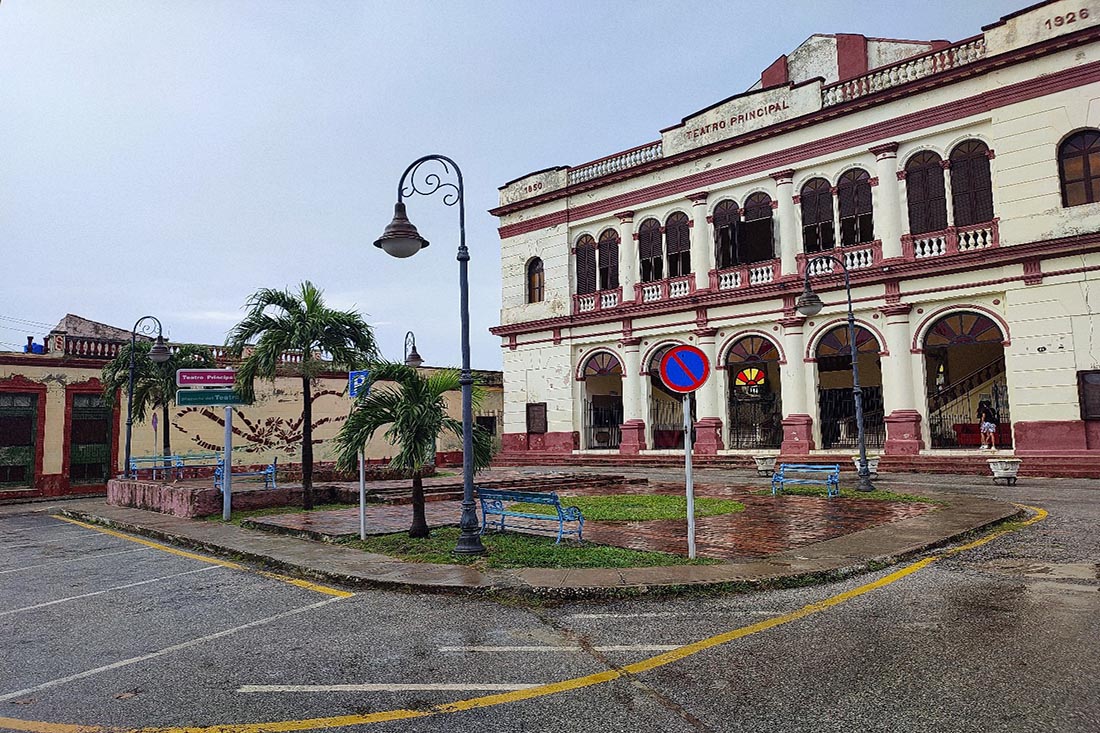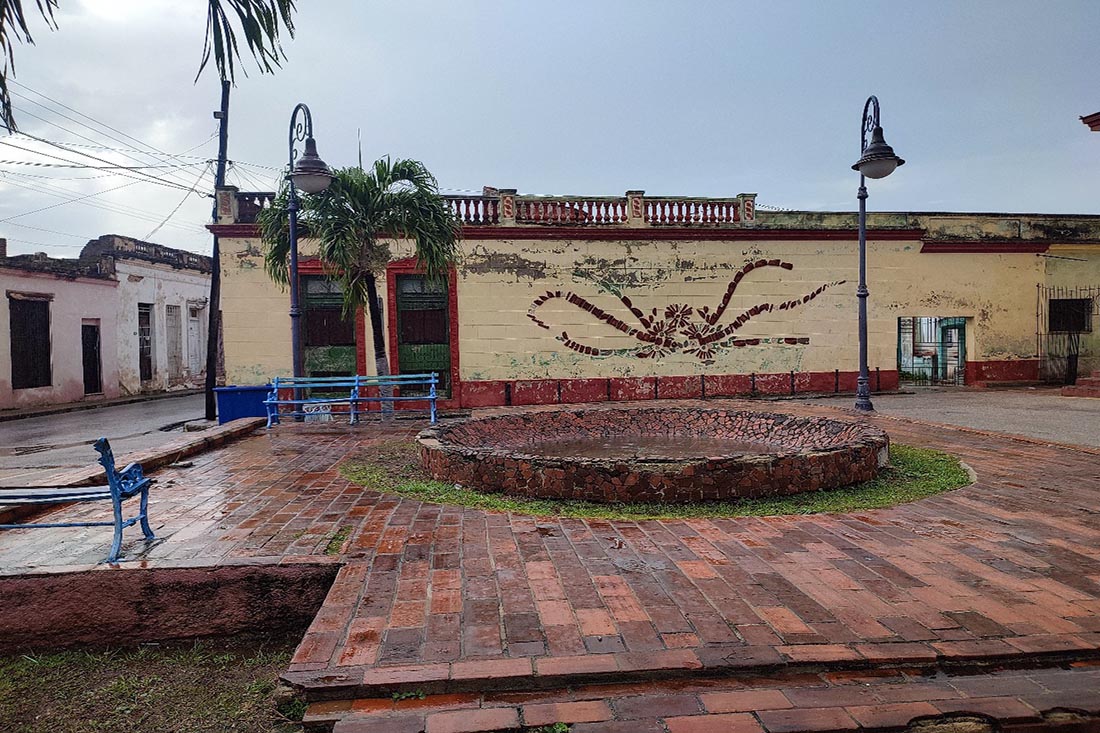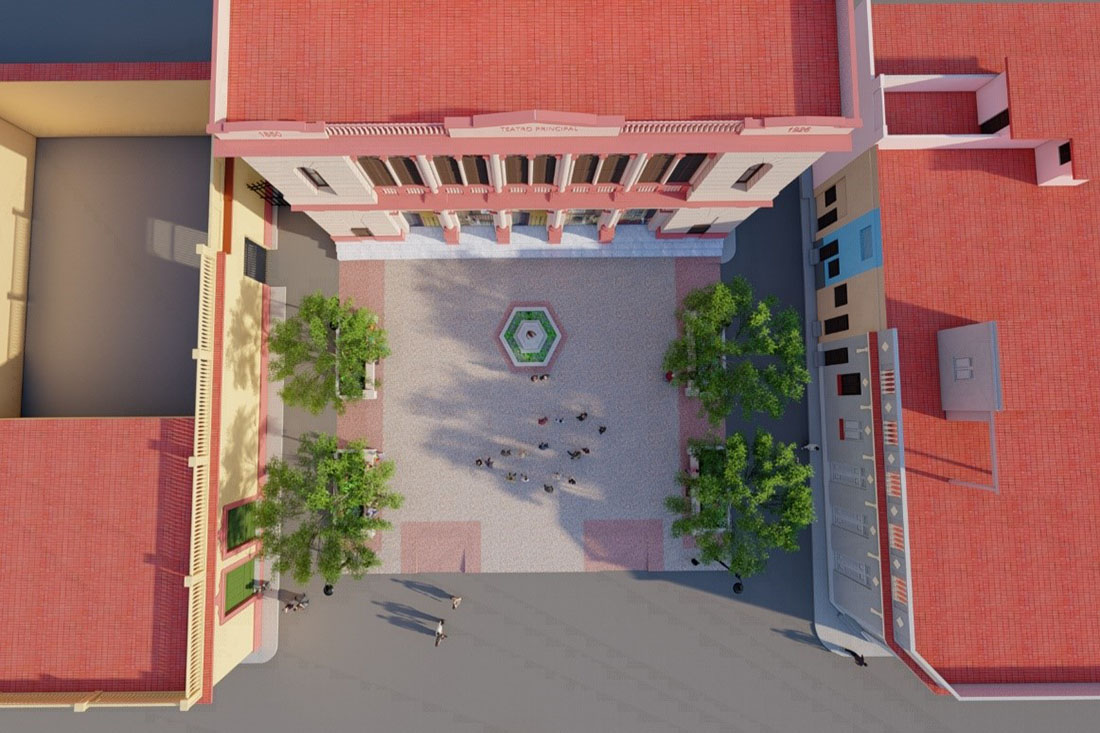By: Humberto Delgado Fernández
A little history
The Main Theater is located in the Historic Center of Camagüey city, very close to the World Heritage Area (ZDPM). Built in 1850, the Theater has gone through various transformations over time, but it has always preserved both the volume and the proportions of the building.
The irregular layout of the old “Jesús, María y José” street (current Padre Valencia street), shows signs of the plot that characterizes the historic center of Camagüey city. Alleys and oblique intersections converge here, outlining a complex network, as evidence of spontaneous urban development. 120m from the beginning of the street appears what is known as Theater Square, anteroom to the Main Theater and, next to it, the small Theater Alley; Both spaces emerged in unison with the building.
The Theater Square through time
From the opening of the Theater, the function of the square was the parade of carriages that brought their owners to the functions that were held there, under the regulation of not parking permanently in its vicinity, in order to avoid any obstacle to traffic. For that function, Merced Square was designated as a parking lot, where they remained until the theatrical performance ended.
After the fire that consumed the Theater in 1920, the square became practically inactive. When it was rebuilt in 1926, a small park with gardens was erected in the space to beautify the environment under the name of Pablo Pildaín, a native of Camagüey who stood out in theatrical art. With the reopening of the Theater, after the intervention in 1977, the park was once again redefined as a public space, without losing its name as Main Theater Square. In the early years of 1990, the waterpot that decorated the park was replaced by a fountain containing a sculpture representative of dance, the work of Camagüey-based artist Aisar Jalil Martínez. Currently the square serves as a lobby for those attending the presentations, as a site for social and cultural exchange. It also constitutes a stage for the preamble of some artistic programs, and a recreation and leisure space for the residents of the neighborhood.
Present and future
The Main Theater park presents deterioration that limits its use, including:
-As a rest area, it does not contain enough elements for your enjoyment, since it only has 4 benches, 2 trash cans and the vegetation does not offer sun protection.
-The design of this space does not allow its versatility to host different types of social and cultural activities
-It does not have adequate accessibility. Since there are no access ramps, pedestrian mobility through it is difficult.
-The pavement is in poor condition, including the remains of the old fountain, causing architectural barriers in addition to affecting the landscape.
For the new design of the urban space, the formal expression will be based on the symmetry and majesty that defines the Theater. A hexagonal-shaped pedestal will be incorporated at its end closest to the façade, which will serve as a base for the sculpture that previously decorated the fountain; this, therefore, will be placed at a height of 1m from the floor level.
Planters will be built for planting tree vegetation, with the purpose of providing shade to the benches that will be placed in the vicinity. The benches will have granite countertops and will be decorated with the theater’s current colors; their backrests will be made of metal.
Among the tasks that will be undertaken to revive the site will be, initially, the total demolition of the park and the dismantling of all its urban furniture; in order to generate a large space at the same level as the street, square type. This should allow the externalization of functions and different activities of the cultural institutions of the axis, including those of the Main Theater. The hosting of multiple activities in this space includes community participation, the development of fairs, public exhibitions, among others.
Translated by: Aileen Álvarez Gacía










